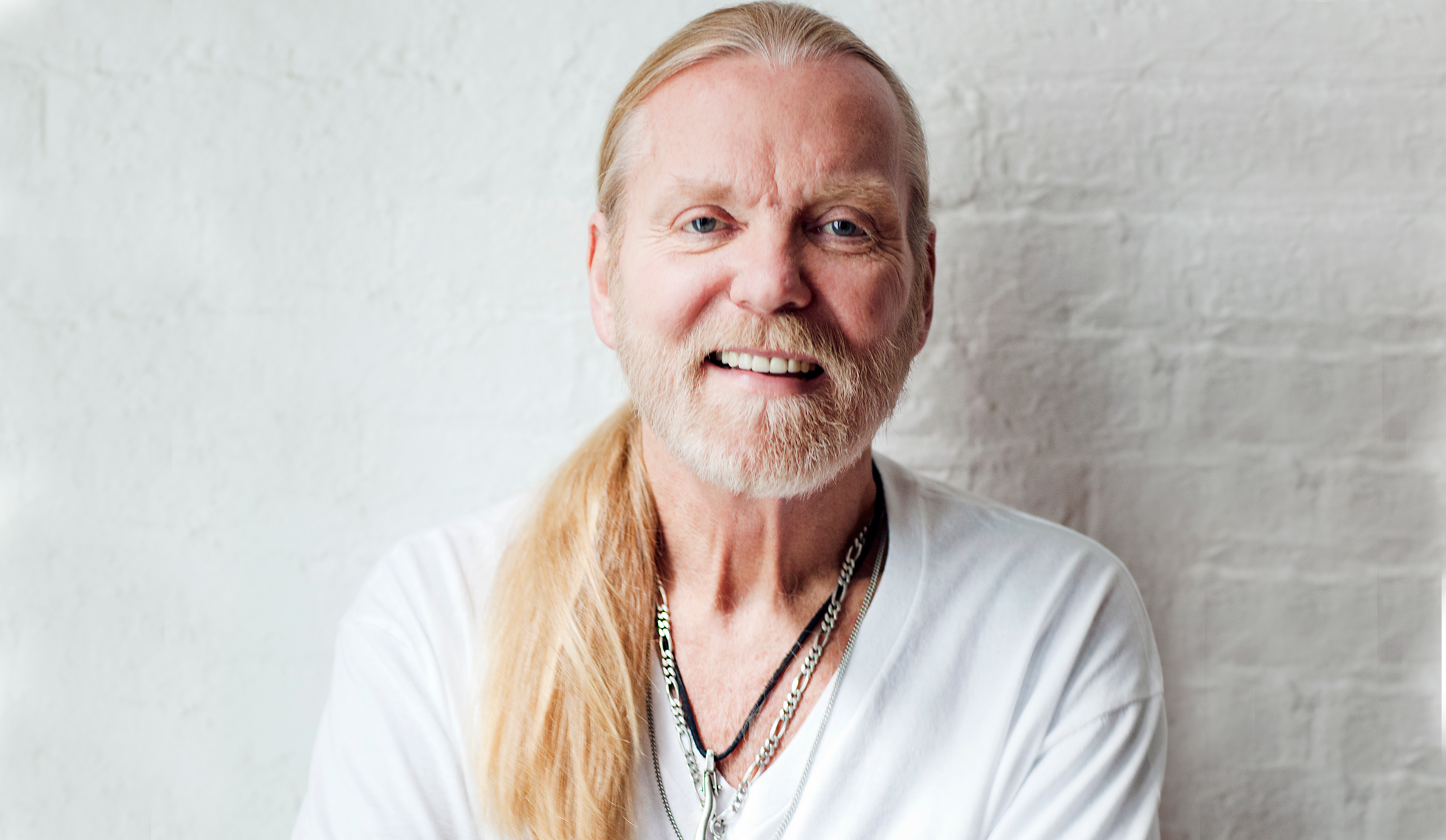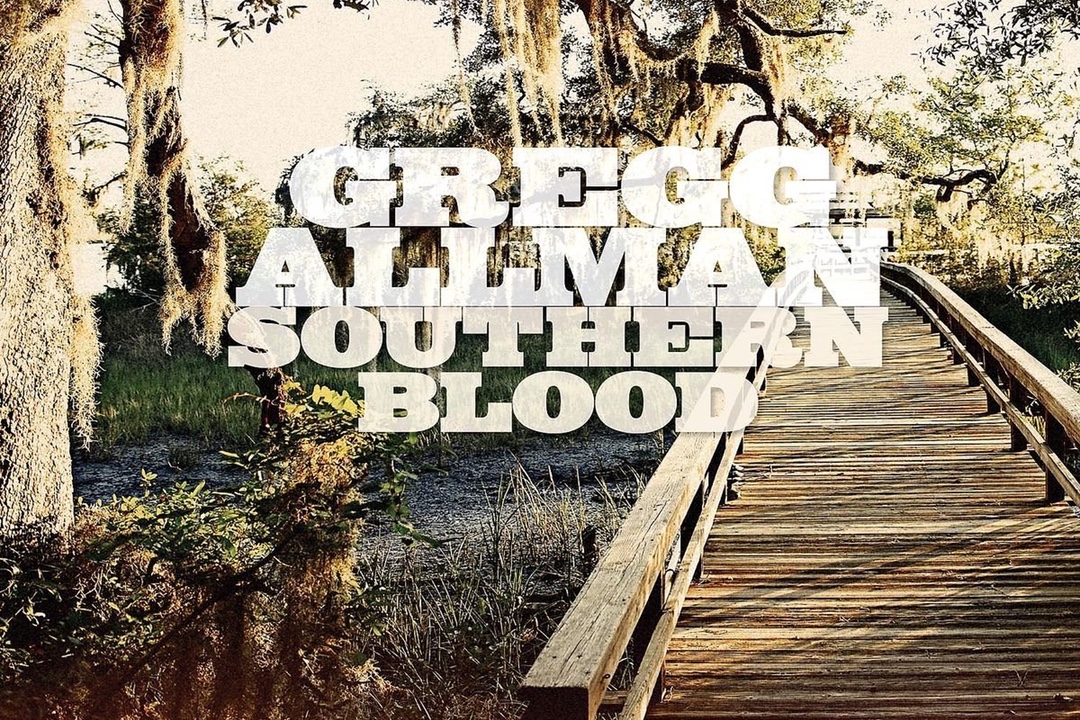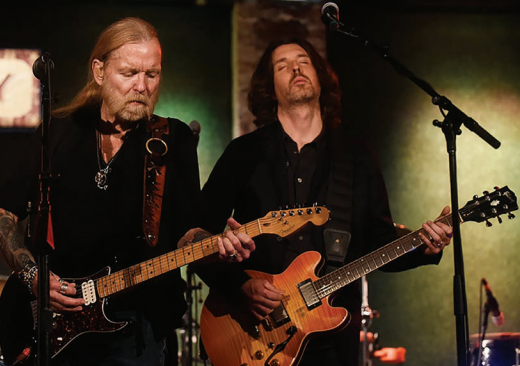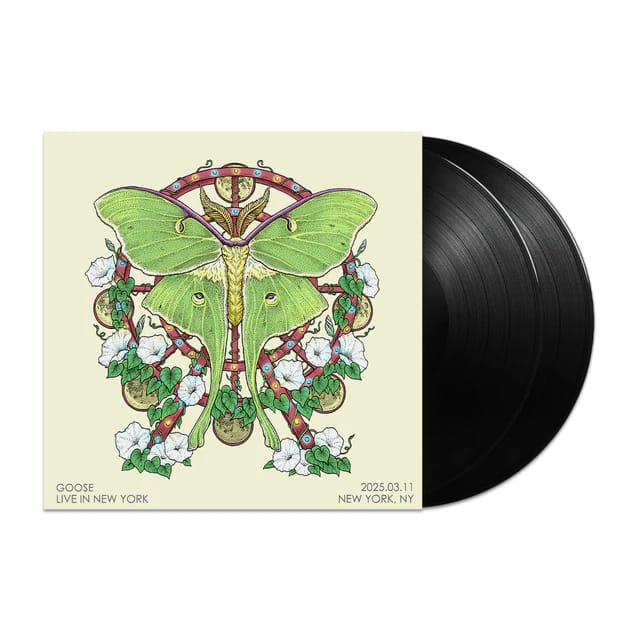End of the Line: Inside Gregg Allman’s Farewell Album ‘Southern Blood’
As a lead up to the Peach Music Festival, which will host a number of tribute performances to late bandmates Gregg Allman and Butch Trucks, we present a series of memories from Allman’s life pulled from the newest issue of Relix which honors the midnight rider. To get the issue, subscribe here using promo code GREGG. $5 from all subscriptions will be donated to The Big House Museum in Macon, GA.

When Gregg Allman announced that he had tapped Don Was to produce what turned out to be his final studio album, Southern Blood, the veteran bassist was just as surprised as anybody. It was early 2014 and Allman was in the midst of promoting “All My Friends: Celebrating the Songs and Voice of Gregg Allman,” an all-star tribute show at the start of the Allman Brothers Band’s 45th anniversary. Was served as the evening’s musical director and was flipping through a concert preview when he learned that Allman planned to hire him.
“I’m reading an interview and he says, ‘I’m gonna do my next album with Don Was at Muscle Shoals. It’s gonna be called Southern Blood.’ That’s how I found out,” Was says with a hearty laugh three and a half years later, while mixing the LP in advance of its September release on Rounder. “Then, I saw Gregg at rehearsals and he said, ‘I hope you’re cool with that.’”
Was took in his first Allman Brothers show at Detroit’s Eastown Theatre in 1971, zoning in on a very Motor City quality in their music. He drifted in and out of the group’s orbit, but remained a lifelong fan. In Allman’s later years, they crossed paths on the awards-show circuit— Was floated the idea of a more formal collaboration to Allman’s personal manager Michael Lehman a few times but nothing came to fruition.
“Even though he wasn’t that well at the time, he still had tremendous charisma,” Was admits of their latter-day encounters. “Ultimately, he was a great blues man—that’s how he fancied himself. When he was in his early 20s, I thought, ‘How is this kid singing such authentic blues?’ And now he had become that guy.”
It took Allman and Was two years to actually make it into the studio to begin work on Southern Blood, the follow-up to Allman’s T Bone Burnett-produced 2011 studiocomeback Low Country Blues (his first solo release since 1997). During that time, the Allman Brothers Band officially retired from the road after their 238th concert at New York’s Beacon Theatre. Allman also continued to face health setbacks due to liver cancer and complications stemming from his 2010 liver transplant.
“Gregg was beautifully stubborn—he was such an incredible human and so obsessed with performing, absolutely giving the best performance possible,” says guitarist Scott Sharrard, who served as the final musical director of Allman’s solo group. “He said to me so many times: ‘I want to go onstage.’ He lived for music, first and foremost, and his fans. And he did not want to let people down. It crushed him to have to cancel shows because of his health.” 
Southern Blood really took shape after Allman and Was started combing through potential covers together. “Even though these were songs he didn’t write, they had a great relevance to his life at that moment,” Was acknowledges. “He and I never discussed it— ever—but he knew he wasn’t going to be around much longer. He wanted to sum up his life and reflect back with this album—tie up loose ends.”
At the same time, Duane’s vision continued to guide Allman’s career to the end. He was adamant about recording his epitaph at Muscle Shoals’ FAME Studios, where Duane got his start as a session musician in the late 1960s while his younger brother was still in Los Angeles, trying to launch a solo career. “The Allman Brothers were created at FAME—they started jamming for the first time in the smaller, back studio,” Was points out.
They ended up settling on eight covers, one new original and “Love Like Kerosene,” a Sharrard composition that Allman had played live and recast with a “Smokestack Lightnin’”-like groove. Most of their selections cleaned up some unfinished business from Allman’s early years.
Tim Buckley was a huge influence on Allman’s singer-songwriter side; they had talked about possibly collaborating before the folkie’s 1975 death so Allman included his “Once I Was.” Building on the Allman Brothers’ legacy of stretching out Willie Dixon tracks like “The Same Thing” and “Hoochie Coochie Man,” Allman and Was revisited his “Love the Life I Live.” And given their surroundings, Allman worked up a take on an early Muscle Shoals chestnut, “Out of Left Field.”
Perhaps Allman’s most direct nod to his brother was “Blind Bats and Swamp Rats,” which Johnny Jenkins included on Ton-Ton Macoute!, the record that began as a Duane solo album, before he shifted gears to put together the ABB. (Capricorn later issued it as a Jenkins release in 1970.) Was also encouraged Allman to try his hand at Little Feat’s “Willin’” and Bob Dylan’s “Going, Going, Gone”—two songs that captured the endless road Allman traveled from show to show—as well as the Grateful Dead’s “Black Muddy River,” one of the most heartwrenching rearview-mirror reflections in the Garcia/ Hunter songbook. “Gregg had something very specific in mind and not just in the material,” Was admits. “He knew he was saying goodbye with these songs.” 
The LP’s rawest moment, unquestionably, is the album-closing cover of “Song for Adam,” a tender ballad written by Allman’s lifelong friend Jackson Browne. They cut it at the end of the sessions, and Allman got choked up while singing. Was hoped to punch up the track by re-recording the vocals, but, sadly, those sessions never happened so it eerily feels like Allman stops singing in the middle of the song. Browne digitally sent over some harmony parts for the track too, and Lehman says Allman was listening to his contributions right before he passed way.
“[After ‘These Days’], Gregg always wanted to record another song of Jackson’s and Chank Middleton, Gregg’s right-hand man, really encouraged him to do that,” Lehman says. “Jackson and Gregg were roommates in LA before his brother called him back to Florida to join the Allman Brothers. They reconnected at ‘All My Friends’ and stayed in touch.”
In addition to recording at FAME, Allman’s other party line was that, unlike the Low Country Blues sessions—which employed Burnett’s usual stable of studio musicians— he needed to lay down the tracks with his live band. Allman was constantly tweaking his solo outfit, swapping members and honing in on an up-tempo, R&B and soul sound. He eventually put together a multigenerational ensemble featuring Sharrard, bassist Brett Bass, New York jamband keyboardist Peter Levin, Booker T. & the M.G.’s drummer Steve Potts, Allman Brothers percussionist Marc Quiñones and the horn section of Jay Collins, Mark Franklin and Art Edmaiston.
They recorded Southern Blood during a breakneck 10-day period; Was estimates that 99 percent of the tracks, including Allman’s vocals, were cut “live on the floor with the band playing.” Allman was ill at the time, but remained totally present and engaged. Besides his signature bluesy vocals and tasty B-3 work, he also showed off his acoustic guitar skills and even returned to his original instrument—the electric guitar. Roots-music troubadour Buddy Miller lends his services on a few new tracks and, while they didn’t contribute to the album, Muscle Shoals mainstays like David Hood and Spooner Oldham were hovering around the studio. (They also recently worked with Sharrard on a solo project at FAME.)
Allman was hesitant to release new music during the final decade of his life. Low Country Blues only contained one of his tunes, the Warren Haynes collaboration “Just Another Rider.” Allman had hinted in several interviews that he hoped to make a final album of original material, but he only ended up including one new composition on Southern Blood, the autobiographical, latter-day psalm “My Only True Friend,” which he wrote with Sharrard.
“Considering all of the obstacles with his health and our travel and tour schedule, we got a remarkable amount done,” says Sharrard, who adds that Allman played around with some of his originals like “Endless Road” “Save Me” and “Shadow Blues.” “It had been a long time since he had written a song from such a personal perspective—in such a vulnerable state. It was very difficult for him to perform ‘My Only True Friend’ live because of how personal it was at the time—and to get it polished to the point where he was confident enough with it. I’m thankful that he got the lyrics and the changes and everything dialed into the point where he really loved the song before he passed away.”
Sharrard says that he worked on two additional new numbers with Allman at home and on the road that weren’t ready to be recorded; he hopes to find a home for them in the future. “He was very careful with his songwriting in later years— it’s what his process turned into,” Sharrard says. “He was obsessed with the turn of one word and how it would change his vocal phrasing and where it would fit the group—and that is very wise song craftsmanship.”
Though Allman continued to tour with the Allman Brothers Band throughout their remarkable second act, he always maintained a solo band that allowed him to emphasize his vocals and songwriting prowess. “The dissolution of the Allman Brothers Band was obviously a very big moment for him emotionally, especially giving up the stewardship of his brother’s dream for good,” Sharrard says.
“The [Allman Brothers Band] was his brother’s vision. Gregg would frequently say to me that he and his brother had a vision together for another Little Milton, Bobby Bland sort of band with horns when they were teenagers. And then Duane started getting into what Gregg used to call the ‘English music’—the wild stuff—and the more expansive jazz like Coltrane. That, of course, created that incredible, original sound that they developed as the Allman Brothers, but Gregg always saw that as a departure from the original script. And he thought of his solo band, particularly the solo band of the last couple of years, as getting back to what he perceived as the original artistic mission that he and his brother started together.”
Allman continued to fine-tune his live set until he physically couldn’t perform anymore, even splicing his stable of hits and Brothers classics with songs by his former bandmates, like Haynes’ “Soulshine” and Dickey Betts’ “Southbound.” He unknowingly took his final onstage bow at the Laid Back Festival in Atlanta on Oct. 29, 2016, strangely enough, exactly two years after the Allmans’ finale and 41 years to the day after Duane’s passing.
Despite almost a half-century of hard living on the road, Allman’s final months were uncharacteristically quiet. He married his fianceé Shannon and even worked on some new songs with her at their home in Savannah, Ga. He reconnected with old friends and bandmates, including his once estranged creative partner Betts, and remained involved as Southern Blood inched toward completion.
“He got back into songwriting, especially because he wasn’t on the road,” Lehman says. “He wasn’t able to perform for those last six months, but he was able to play music at home and work on songs.”
Lehman reinforces that Allman expressed his final wishes for the album, from its art to its roll out. Despite his failing health, Allman remained a true Southern gentleman, getting fully dressed and putting on jewelry for his final porch meeting with his manager. “He was able to hear some of these songs even a day or two before he passed,” Lehman says. “He loved them and would smile.”
While Allman ended up passing away at home, he remained a bluesman, surrounded by music, until the end of the line. “He was evolving in his solo journey. This album is a continuation of Low Country Blues, with this earthy Americana and blues sound, and really represents where Gregg was at,” Lehman says. “He was so proud of it and, even though he knew he wasn’t going to be able to promote it, he wanted to get it out to his fans. He was listening to music until his last breath.”




















